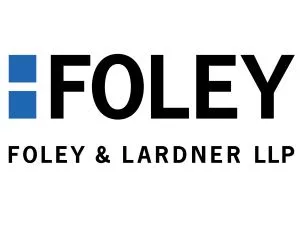- within Intellectual Property topic(s)
- within Criminal Law, Government, Public Sector and Insurance topic(s)
The U.S. Supreme Court has agreed to review a Federal Circuit decision that could impact the enforcement of patents covering certain technologies relevant to the personalized medicine industry, e.g., patented diagnostic methods and digital health. On January 10, 2014, the Court granted certiorari in Limelight Networks v. Akamai Technologies (12-786), to review the issue of whether a party can be found to have induced another to infringe a patent claim when neither one could have been found to directly infringe the claim. In the decision on appeal, the Federal Circuit held that infringement can be found under 35 U.S.C. § 271(b) if a party induced others to act with him or induced others to perform all elements of the claim. In its en banc opinion, the Federal Court overruled its prior precedent that held that for a single party to be liable for induced infringement, a single entity must perform all elements of the claim. See BMC Resources, Inc. v. Paymentech, L.P., 498 F.3d 1373 (Fed. Cir. 2007). The Federal Circuit reasoned that a party who knowingly induces others to engage in acts that jointly practice the steps of a patented method – and those others perform those steps – has had precisely the same impact on the patentee as the party who induces the same infringement by a single infringer.
The Alleged Infringement
The patented technology relates to a method for storing and delivering web page content that ensures access even during periods of high demand, thereby resolving internet congestion. The invention allows an internet content provider to offload requests for internet content to a third party's content delivery network. U.S. Patent No. 6,108,703 (the '703 Patent) covers the basic method wherein certain web content is tagged so that the content may be served by the content delivery network.
Limelight, characterized as Akamai's direct competitor, sought to exploit the patented invention. Limelight performed most of the asserted claimed method steps, while its customers (following explicit directions and using specialized data tags provided by Limelight) performed the remaining steps.
After trial and appeal, the Federal Circuit consolidated Akamai's dispute with a separate appeal before the court, McKesson Technologies, Inc. v. Epic Systems Corp., No 2010-1291. On August 31, 2012, the Federal Circuit held that indirect infringement under 35 U.S.C. Section 271(b) could occur as long as all steps of a claimed method are performed and that it was unnecessary for one party alone to perform all the steps of the method claim. Limelight thereafter appealed to the U.S. Supreme Court.
Limelight's Petition Request
Limelight asked the Court to review the Federal Circuit's decision, posing the question presented as:
Limelight argued that the Supreme Court should review because the Federal Circuit has created a new basis for patent-infringement liability that conflicts with the Court's precedents and the Patent Act. Limelight noted that for example, the Federal Circuit's decision conflicts with the Supreme Court's holding that no defendant can be liable for indirect infringement in the absence of proof of direct infringement. This, Limelight argued, is irreconcilable with the Patent Act, which does not distinguish between direct infringement that violates Section 271(a) and direct infringement that provides a predicate for induced infringement under Section 271(b).
Akamai's View
Akamai disagreed with Limelight's characterization of the issue, arguing that the Federal Circuit did not hold that infringement can be found where "no one" directly infringes the claim, but rather, the issue for the Court is:
Akamai urged the Court to deny the petition because review is premature. After en banc review, the Federal Circuit reversed and remanded the case to the trial court for further proceedings under 35 U.S.C. Section 271(b). Therefore, Akamai noted, the case is at an interlocutory stage with an incomplete record. Akamai also argued that substantively, the Federal Circuit did not change existing law, but rather merely corrected an error in Federal Circuit jurisprudence.
The United States Supports Supreme Court Review
The United States filed a brief in support of Limelight, supporting Limelight's request for Supreme Court review. The United States posed the issues for review as:
- "[w]hether a defendant that performs some steps of a patented method and that actively induces its customers to perform the remaining steps is liable for inducement of infringement under 35 U.S.C. Section 271(b)?
- "[w]hether a defendant that performs some steps of a patented method, acting together with another entity that performs the remaining steps, may be liable for direct infringement under 35 U.S.C. 271(a)?"
The U.S. argued that Supreme Court review is warranted to avert a significant expansion of the scope of inducement liability (and a corresponding increase in burdensome litigation) that is not justified under a proper understanding under Section 271.
The Supreme Court obviously agreed with Limelight and its supporters, as the Court agreed to review the case.
Application to Personalized Medicine
This case is important to diagnostic method patents and patents related to treatment decisions wherein information is passed between two or more parties. For example, a patented method may require a technician to analyze a sample and a treating physician would make a treatment recommendation based on the results of the analyzed sample. The Federal Circuit's alleged expansion of liability allows patentees, who may have been hampered by the Supreme Court's earlier Prometheus and Myriad decisions, to enforce method patents against multiple parties who collectively practice proprietary methods.
We now wait for the Supreme Court to weigh in.
Decision below, Akamai v Limelight 692 F.3d 1301 (Fed Cir)
The content of this article is intended to provide a general guide to the subject matter. Specialist advice should be sought about your specific circumstances.


